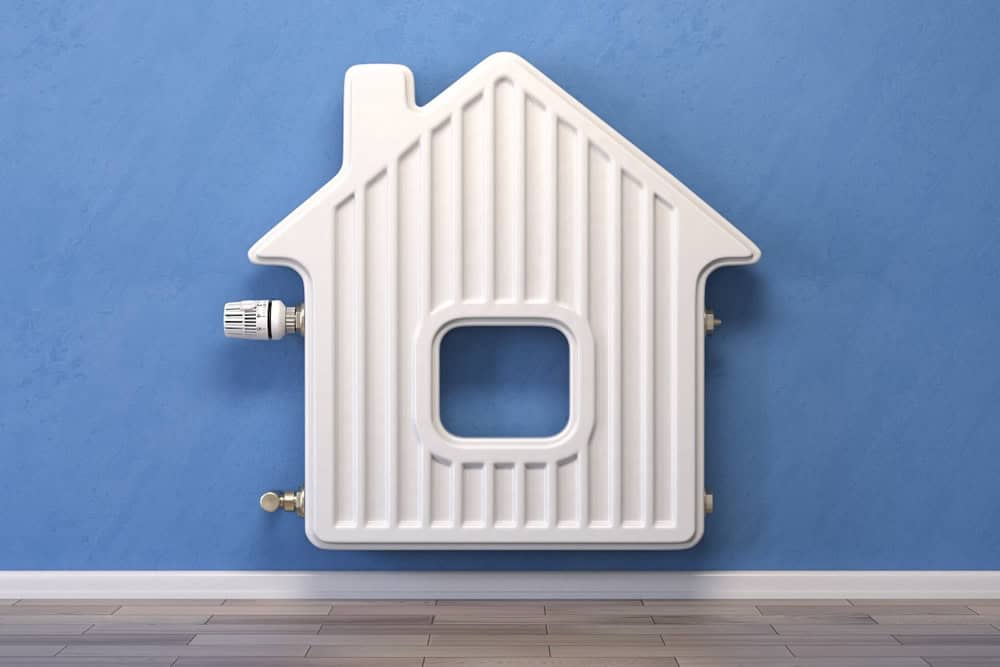As a landlord, you’re responsible for so many aspects of your tenants’ wellbeing and care, from making sure the property is secure to keeping it mould and pest-free. Whether you’re experienced or new to the world of buy-to-let investing, understanding your responsibilities regarding heating and ventilation obligations is crucial.
 [Image source: Deposit photos]
[Image source: Deposit photos]
What are a landlord’s legal obligations?
In Scotland, landlords have specific legal responsibilities to ensure their rental properties meet certain standards for heating and ventilation. The Private Housing (Tenancy) Scotland Act 2016 outlines the repairing standard, which requires landlords to keep their property in good repair, including maintaining heating and ventilation systems in proper working order.
Landlords also need to comply with the Energy Efficiency Standard for Social Housing (EESSH) if their property is part of the social rented sector, which sets out energy efficiency targets. This might mean improving insulation in the property or installing renewable energy systems such as solar panels which will work in conjunction with eco-friendly heating systems to reduce the carbon footprint of the property.
While there isn’t a specific minimum temperature requirement, as with other jurisdictions, landlords do need to ensure that the heating system is sufficient to maintain a reasonable temperature within the property. Another responsibility is tackling condensation and mould which are significant issues in many homes. As owners of rental properties, it’s important to note that landlords have a duty to take appropriate steps to prevent these problems, which often arise from inadequate ventilation.
It’s worth noting that the Scottish Government is currently consulting on new energy efficiency and condition standards for private rented housing, which could result in further obligations being placed on landlords in the future.
Heating systems in buy-to-lets
Heating systems in Scottish rental properties vary widely. Common options include gas central heating, electric storage heaters, and more recently, heat pumps, although gas central heating remains one of the most popular choices due to its efficiency. As a landlord, you are responsible for maintaining the heating system in good working order, whichever system is in place. This includes arranging annual servicing for gas boilers by a Gas Safe registered engineer, promptly addressing repairs, and considering boiler replacements when necessary.
Energy efficiency is becoming increasingly important when it comes to heating too. Upgrading to a modern condensing boiler or exploring alternative heating options like heat pumps can improve energy efficiency. Heat pumps, both air-source and ground-source, are gaining popularity as energy-efficient alternatives, especially in properties without access to mains gas. These eco systems can provide both heating and cooling, potentially offering long-term cost benefits despite the higher initial installation costs.
Improving insulation in walls, roofs, and windows can also enhance heating system efficiency, reducing energy consumption and costs for tenants while improving the property’s EPC rating. As a landlord, investing in energy-efficient heating options not only helps meet regulatory requirements but can also increase property value and attract environmentally conscious tenants.
Ventilation requirements in a rental
Adequate ventilation is crucial for maintaining a healthy living environment in rental properties. It helps control moisture levels, prevents condensation and mould growth, and ensures good indoor air quality for tenants. In Scotland, ventilation requirements are primarily addressed through the concept of the ‘repairing standard’ as outlined in the Private Housing (Tenancy) Scotland Act 2016. This legislation stipulates that landlords must maintain their properties in a habitable condition, which includes adequate ventilation.
There are two main types of ventilation: natural and mechanical. Natural ventilation relies on features such as open windows, trickle vents, and air bricks to allow fresh air to circulate. While not explicitly detailed in the same way as in the English Building Regulations, the overall principle of providing adequate ventilation is a fundamental requirement for Scottish landlords.
Proper ventilation not only meets legal requirements for rentals, but it also protects your property from costly damage caused by excess moisture, such as rot, damp, and mould. Scheduling regular inspections of these systems and addressing any issues promptly will also help maintain a healthy living environment for your tenants and prevent more expensive repairs in the future. It’s important to educate tenants on proper ventilation practices too, such as using extractor fans, opening windows regularly in kitchens and bathrooms, and avoiding drying clothes indoors without adequate ventilation or a dehumidifier.
Who is responsible if the heating is broken?
Repairs and maintenance to the heating system fall to the landlord to resolve. In addition to an annual boiler check, landlords need to ensure that faulty heating systems are responded to within 24 hours during cold weather, and any damage to the walls or floors as a result of a broken system will need to be repaired. For this reason, it’s in a landlord’s best interests to ensure that the system is well maintained and up to date with servicing, to prevent any breakdowns or damage to the property.
Ensuring that these systems are serviced, energy-efficient, and compliant with legal standards is crucial for the comfort and wellbeing of tenants but it also protects the property itself from potential damp and mould issues. With the evolving regulatory landscape, staying informed and proactive about energy efficiency standards, and heating and ventilation requirements, will help landlords meet their obligations and avoid costly repairs or penalties.
As a core component of a habitable space, it’s good practice to keep the heating system up to date and set aside sufficient money for upgrades every few years, to enhance property value and contribute to a more sustainable living environment.









